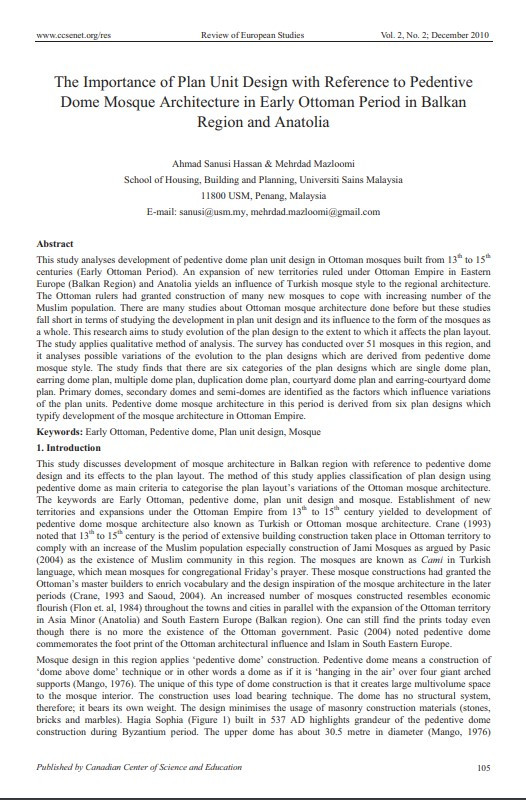
This study analyses development of pedentive dome plan unit design in Ottoman mosques built from 13th to 15th
centuries (Early Ottoman Period). An expansion of new territories ruled under Ottoman Empire in Eastern
Europe (Balkan Region) and Anatolia yields an influence of Turkish mosque style to the regional architecture.
The Ottoman rulers had granted construction of many new mosques to cope with increasing number of the
Muslim population. There are many studies about Ottoman mosque architecture done before but these studies
fall short in terms of studying the development in plan unit design and its influence to the form of the mosques as
a whole. This research aims to study evolution of the plan design to the extent to which it affects the plan layout.
The study applies qualitative method of analysis. The survey has conducted over 51 mosques in this region, and
it analyses possible variations of the evolution to the plan designs which are derived from pedentive dome
mosque style. The study finds that there are six categories of the plan designs which are single dome plan,
earring dome plan, multiple dome plan, duplication dome plan, courtyard dome plan and earring-courtyard dome
plan. Primary domes, secondary domes and semi-domes are identified as the factors which influence variations
of the plan units. Pedentive dome mosque architecture in this period is derived from six plan designs which
typify development of the mosque architecture in Ottoman Empire.
I agree to the terms outlined below:
You agree to upload and assign Mosqpedia Database the rights to use the content worldwide and in perpetuity across all current and future media platforms. Mosqpedia Database may edit, copy, adapt and translate your contribution.
The content will be distributed under the Creative Commons Attribution-Deed – Attribution-NonCommercial-NoDerivatives 4.0 International – Creative Commons
All data will be stored in line with data protection regulations.